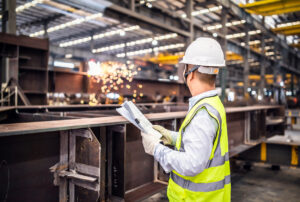Archive for January 2021
Do You Know About Fire Safety Inspection?
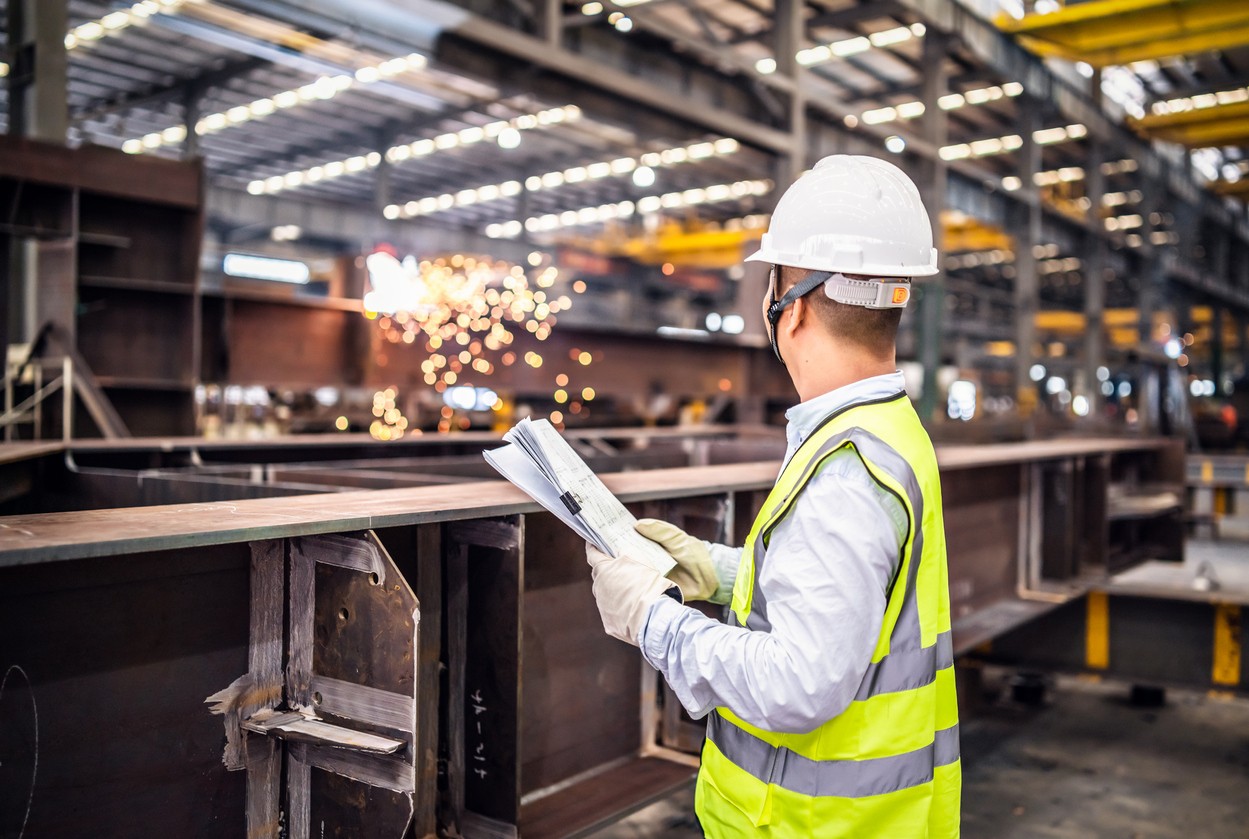
The fire department conducts fire safety inspections of a facility frequently to point out the risks and dangers associated with the fire. Then, the employers have to make the desired changes accordingly to the results. It all depends on the state or city laws or local jurisdiction relating to inspection of facilities, how these inspections are carried, and how long it takes to complete. You have to take these inspections seriously, as it could put someone's life at risk. It is advised to acquire some knowledge about the ordinances applicable to fire inspection and standards required by the state. Understanding the procedures and requirements for inspections helps employers comply with inspection codes and prevent the problems that they could have faced.
To maintain a good relationship with fire inspectors, you should be prepared for the inspection and comply with the inspection requirements. Surprise visits are frequent, and inspectors carry out surprise inspections just like the food-related establishments. These surprise visits lead to better preparation and keep employers up to date with the fire protection initiatives. Fire safety inspectors check the following things at the time of inspections:-
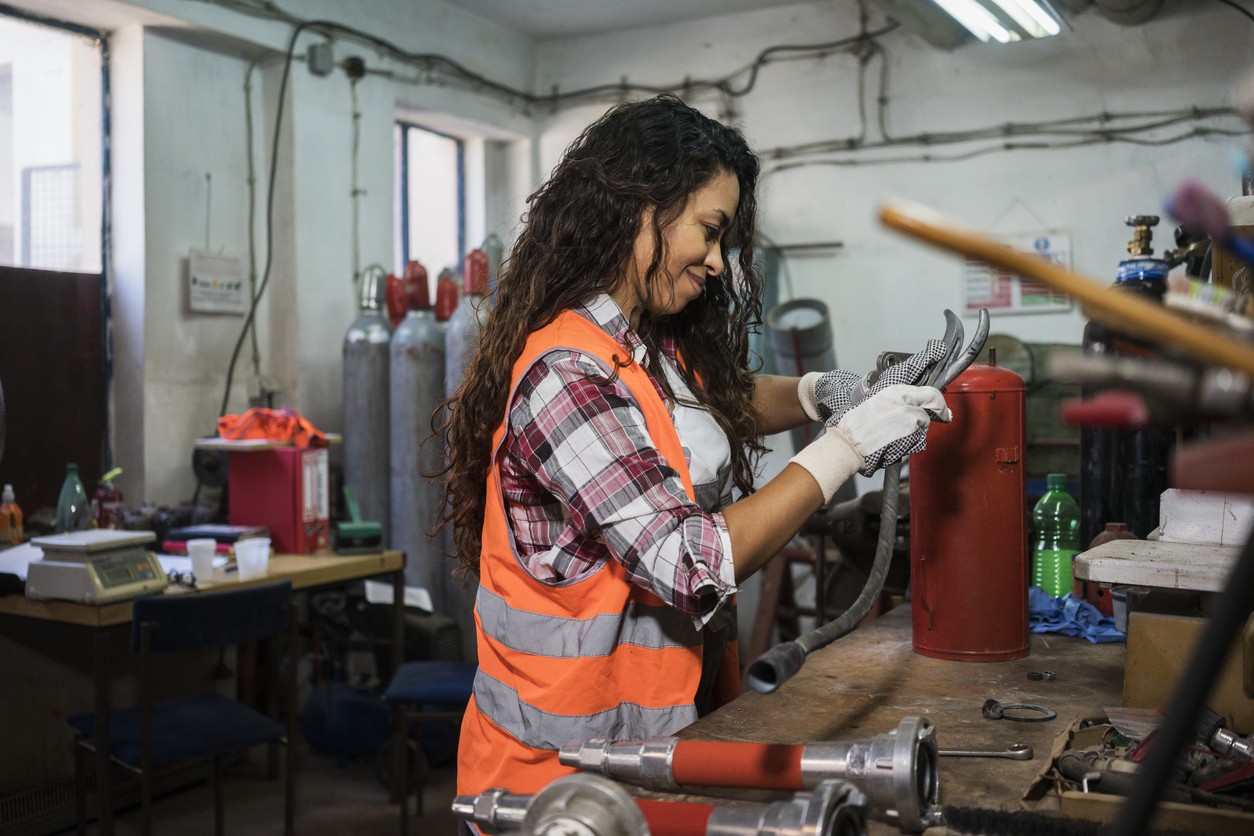
The inspector will examine the workplace's prevailing safety system, including the active safety systems vs. passive safety systems.
The active fire systems consist of:.
- Smoke alarms.
- Fire extinguishers.
- and fire sprinkler systems.
On the other hand, passive fire systems consist of that equipment that helps prevent fires and contain them while helping people in the safe exit. We can take exit signs and exit doors as an example.
The fire inspector has to identify the potential fire hazards within the facility, and he'll point out possibilities that could spark a fire.
The inspector will ensure the safe access of emergency responders in the building at the time of emergency.
Fire safety inspections are mandatory to provide a secure environment in the workplace. The annual fire inspection brings many positives, or when the same is done in compliance with local laws, it brings the following outcomes:-
Regular inspections make the workplace or building safe for employees.
- It ensures the safety of residents and visitors to the building.
- It helps in job security because most of the facilities end up in loss after fire accidents and unlikely to open in maximum cases.
- Appreciate the building's value and avoid maintenance costs that would have been needed to fix the building in case of fire hazard.
- Fewer fire accidents mean lower insurance costs, which would have been required to maintain the building and use of fire protection systems.
According to the fire department, fire hazards are reported every 24 seconds in the United States, which should not be the case. Although the death rate related to fires has reduced remarkably compared to decades ago, the numbers are still high.
Workplace safety is a debatable topic and requires detailed analysis to introduce new methods to prevent fire accidents at the workplace.
What Does IFC Stand For?
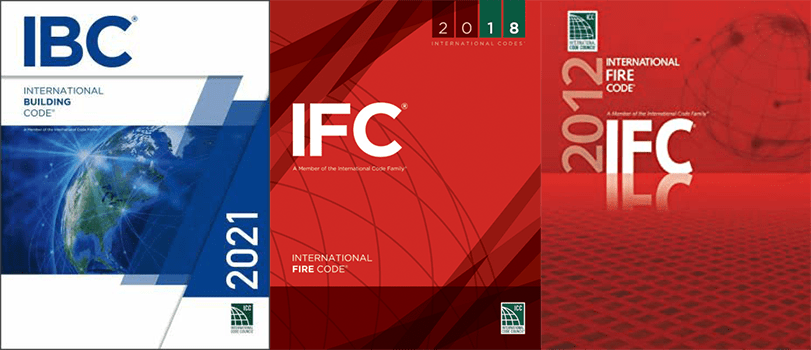
IFC is the abbreviation of the International Fire Code. IFC has issued IFC codes in 2018, which serve as SOPs to practice the minimum level of safety guidelines for all the old and new facilities or buildings. These codes don't only provide guidelines but offer a complete set of procedures that should be followed to prevent the risks of fires to keep people safe. The IFC provides guidelines for designing a protection system. It is recommended to use all new or existing structures, upgrading the old protection systems, or establishing new procedures.
Where Does IFC apply?
Presently, IFC is being used worldwide; almost 90% of States in the United States have adopted the IFC code. The IFC codes are being used for designing structures of the building even in the states where IFC has not been officially adopted yet because these codes offer safety and maximum protection.
What Are the Advantages of Implementing IFC?
Regardless of any legal obligation, the IFC guidelines are religiously followed due to their numerous advantages. The guidelines can improve fire safety in most of the building structures and offer countless benefits. the following are the most useful guidelines of IFC:-
Flexibility
The IFC codes are not rigid and offer flexibility to the people to construct buildings and facilities. They are easy to comply with by developers and architects. It gives freedom to construction companies and property builders to design their buildings according to their desires.
National Standards
This means IFC guidelines are designed in consultation with all the stakeholders at a national level, and these guidelines have developed a consensus on using codes among different groups. Thus, making it possible to implement the standards across the country.
Logical Regulations for Hazardous Materials
The IFC regulations have been examined thoroughly, and they are found quite logical to be implemented at the facilities. These standards apply to the buildings or facilities that use hazardous materials to ensure their safety. Regulations are forward-thinking for more ways to protect the lives of people and keep the vicinity safe.
Detailed Guidelines
The IFC codes have been designed in detail; it suits all the situations used within the buildings like in refrigerator rooms, stores, boiler systems, places used for fire supplies, sprinkler systems, or any other place where there is a chance of fire hazard.
Which Fire Extinguisher Is Best For Electrical Fire?
Which Fire Extinguisher Is Best For Electrical Fire?
Fire extinguishers have many types to be used for various fires, and each one uses a different material against different types of fires. To deal with electrical fires, class C fire extinguishers are designed to extinguish different fire types. If the fire erupts out of electricity, termed as an energized electrical fire, class C fire extinguishers can extinguish such fires. First, to completely put out electrical fires, you need to cut down the source of electricity as it could add fuel to the fire. A constant source of electricity can ignite the fire and results in a major catastrophe if the electrical supply is not disconnected in the event of a fire. It can burn everything available in the facility and result in the blast in situations containing flammable gases or liquids.
multiple sources of power failures can happen in a facility that results in electrical fires, and the most common of these include:-
fires arising due to short circuits
faulty wiring
overloaded devices
wire damages
broken electrical outlets
poor installation of lights
Fire Extinguisher Classes Associating To Electrical Fires
Electrical fires can be blown out using extinguishers containing non-conductive materials rather than foam-based equipment because water-based extinguishers can cause a severe fire hazard due to their high conductivity. If anyone uses water or foam-based extinguishers to stop electrical fires, it will result in disaster and severe damage. It led to creating new types of fire equipment, i.e., class C fire equipment that is safe to use on electrical fires and made up of ingredients like potassium chloride, mono-ammonium phosphate useful potassium bicarbonate substance to stop the fire. Some class C-type fire extinguishers use carbon dioxide to control fires because CO2 can prevent fires due to its capability to keep the oxygen out of the fire and stop the heat as it gets cold when applied to the fire.
Since the c type fire extinguisher contains non-conductive materials, they are quite helpful in extinguishing fires that are blown due to electrical faults. However, it is recommended to have both types of fire extinguishers in hand to use at the time of emergency to put out different types of fires spread out of something. You should have class A or class C fire extinguishers to deal with the different types of fires. You need to know how and where to use the fire extinguishers.
It is recommended to keep a check on all the electrical works and carry regular inspections to ensure electric circuits are working correctly. You can take help from trained professionals who are specialized in the field. This is the only way you can prevent such catastrophic accidents at your workplace or building. Besides, you need to make sure your fire safety equipment is in working condition and ready to use when required. Gather all the information relating to the electrical work in the premises and do annual inspections on all IFC codes implemented in your building design.
Which Types of Fire Safety Equipment Companies Should Have on Premise?

OSHA is the regulatory body that ensures fire prevention at workplaces. To ensure workplace safety, OSHA has introduced safety standards for the workplace. Employers should implement fire safety measures for the employees and reduce fire hazards at the workplace. Every business or company with 10 or more employees needs to have a dedicated fire prevention plan and training to respond in emergencies. The National Fire Protection Association fire code makes it mandatory for all residential and commercial premises to maintain essential safety equipment like fire extinguishers and other fire protection equipment. There are different types of fire safety equipment available on the market that employees can use in an emergency if trained on using the safety equipment.
The following are the most functional and effective fire safety equipment that residential and commercial buildings must have to cope with unforeseen situations.
Fire Extinguishers
This is the primary safety equipment that every business should have at its premises. They should be easily accessible, ready to use, visible to employees, and inspected regularly. The fire extinguishers make fundamental fire safety tools capable of containing fire and saving lives from potential fire hazards. The equipment must be installed on walls at suitable places near the exits in the facilities. To operate the fire extinguishers, you need to follow the PASS method that involves pulling the pin, positioning the nozzle, pressing the lever, and moving the fire extinguisher from side to side.
Fire Suppression System
Fire Suppression Systems are used commonly for the safety of people and premises. They can prevent the potential damages of property and lives in the case of a fire eruption. NFPA 13 standards are followed for the design and installation of fire sprinkler systems. Fire extinguishers are only used to prevent small fires, whereas sprinklers provide an advanced protection system that prevents flames, smoke, and fire. The sprinkler system stops the fire from spreading and can completely secure the premises.
Smoke Alarms
Smoke alarms can reduce the risks of fire eruption by almost 90% and timely alert the users. It is the best tool to identify smoke and flames rising out of the fire on the premises. These alarms can detect fire, smoke, and flames within a building, and these devices turn on/off automatically whenever a smoke or fire erupts and goes off automatically. It is advised to test your smoke thirst month, and smoke alarm batteries should be replaced every year. Experts recommend changing smoke alarms after 10 years to ensure the safety of the building.
Carbon Monoxide Alarms
The presence of carbon monoxide in the atmosphere can be dangerous for people because it contains a poison, which can be inhaled with the breath. Carbon Monoxide alarms are tools that detect the carbon monoxide in the air and protect the workplace from potential poisonous gases that could have been inhaled along with other gases.
NFPA 16 Standard for the Installation of Foam-Water Sprinkler and Foam-Water Spray Systems

Fire incidents are among the major challenges the world encounters today. Most fire protection and fire engineering specialist follow the authorities and NFPA formulate standards, and the observance of these standards is directed compulsory in and all the constructions.
One such standard is NFPA:16. What is this standard about, and what does it imply? We will cover all the information in the following section.
What is NFPA: 16?
NFPA 16: Standard for the Installation of Foam-Water Sprinkler and Foam-Water Spray Systems provides maximum protection and safety against the fire. It provides guidance for installing or repairing the foam water sprinkler and foam water spray systems based on engineering principles and field experience.
The standard outlines minimum requirements for the design, installation, acceptance tests, inspection, and maintenance of foam water sprinkler and foam water spray systems. NFPA 16 specifies that these systems are adequately designed to effectively achieve the desired density of both systems to prevent life and property losses in the US.
Foam-Water Sprinkler and Foam-Water Spray Systems
Foam water sprinklers and foam water spray sprinklers are complicated systems required to extinguish the most horrible fires caused by flammable liquids like alcohol. In case of a fire emergency, the system is activated, and water pressurizes the foam bladder tank to release foam, which combines with water and extinguishes fire.
NFPA: 16. Directions:
NFPA: 16 covers all the directions involving the design of the water supply and discharge density. Under the illustrated standard, the water supplies shall be designed to supply water at the designed discharge density and pressure for a minimum of 60 mins.
It further points out that the minimum discharge density, in any case, should not be less than 0.16 GPM/ft2 (6.5 mm/m2). However, different values can be used depending on the type of fire and the foam manufacturer's recommendations.
Foam-Water Sprinkler and Foam-Water Spray Systems
Though there are many types of Foam-Water-Spray Systems, we have covered the Wet Pipe System in detail. So, you have a comprehensive understanding of this system.
Directions for the wet pipe system:
According to NFPA 16, wet pipe low flow systems need to be automatic and mechanical without devices, valves, and pumps. All components of the system shall be approved to ensure maximal working.
The system requires a reduced discharge pressure at the riser through an approved pilot operated pressure regulating valve. The valve should be capable of enduring water pressure of 250PSI.
NFPA 16 states that a concentrate control valve shall be present between the bladder tank and concentrate controller. The valve should be designed in such a way that it automatically opens in response to water flow. Moreover, the valve shall be of corrosive resistance material with Halar coating, and valves shall be of Viking Model E-2, E-4, or F-2.
The system requires Foam concentrate aqueous or alcohol-resistant aqueous film-forming foam. In the case of water-soluble liquids, the alcohol-resistant type is needed.
These Foam concentrates shall be approved and designed to ensure their efficient working with the Viking Corporation Low Foam System.
WET PIPE AFFF SPRINKLER SYSTEM
According to NFPA 16, for the proper installation and working of wet pipe AFFF sprinkler system, a system fire department connection is crucial. The brass body connection shall be of brass and FM approved for fire protection use.
NFPA 16 also indicates using an alarm valve to activate the alarm during water flow in the system. The valve should be FM approved and installed in a vertical or horizontal position to operate at a pressure of 250 PSI (17 BAR).
A low expansion foam bladder tank is required according to NFPA 16 to store the foam concentrate. The tank should be fitted close to the riser to make it accessible for inspection, and it should meet ASME pressure vessel requirements.
Foam concentrate shall be of brass, and it should have an appropriate nominal orifice plate size. Apart from the basic layout and installation, NFPA 16 covers all requirements for maintenance.
Additionally, foam concentrates needs to be tested by installing contractor which provides maintenance and safety data sheet to the owner.
Temperature and spacing:
Apart from designs, the installation of these sprinkler systems at proper spacing is also necessary. According to NFPA 16, spacing should not be more than 100 square feet per sprinkler.
When these sprinklers are required to fit on the roof, their temperature should not exceed the range of 121 -149 degrees Celsius. While for low-level installation, the temperature should be maintained between 57 to 77 degrees Celsius.
Conclusion
Foam-Water Sprinkler and Foam-Water Spray Systems are essential fire safety equipment installed in buildings to ensure protection against fire caused by flammable liquids and airport hangers. To design a proper system depending upon the type of facility and its installation requires compliance with requirements provided by NFPA 16.
NFPA 13R: Standard for the Installation of Sprinkler Systems in Low-Rise Residential Occupancies

The fire has become a significant problem in the United States. Every day, on the news, you see dark clouds of smoke and fire rising from residential occupancies, caused by kitchen accidents, faulty wiring, or carelessness. These increasing fires have now become nightmares for Americans, burning people's properties and turning precious lives into ashes.
But what is the best solution to combat these horrible fires in residential buildings?
The answer is the Fire Sprinkler System.
What is a Fire Sprinkler system?
It is simple but effective machinery to stop the fire and protect against the most unexpected fires, minimizing the risk of property damage and life losses. The system is based on a water supply system that distributes highly pressurized water into the pipe network to which fire sprinklers are connected.
Sprinkler System acts as the first line of defense against the fire, and its proper installation is essential to constrain spark in the room where the fire begins. It is the most efficient component of the fire response system as it provides the residents sufficient time to escape the building on fire.
According to the NFPA report on Sprinkler System, from 2010 to 2014, the death rate per 1000 fires was decreased by 87% in buildings with Sprinkler systems, compared to properties without automatic extinguishing systems.
Owing to Sprinkler systems, the civilian injury rate was reduced by 27%, and the firefighter injury rate was dropped by 67%.
Considering the importance and necessity of Fire Sprinkler systems, it is crucial to have appropriate guidance regarding their designs and installation.
NFPA 13R: Standard for Installation of Sprinkler Systems in Low-Rise Residential Occupancies
In this regard, NFPA 13R: Standard for Installation of Sprinkler Systems in Low-Rise Residential Occupancies cover up all the conditions requisite to design and install automated sprinkle systems in residential occupancies up to four stories high.
NFPA 13R includes all information about the designs and installation of the Sprinkle System to detect and combat fires in residential buildings. It ensures the proper utilization of Sprinkle systems to prevent life and property loss in a sudden fire.
A standard Sprinkler system that complies with NFPA 13-R
NFPA 13R provides assistance on Sprinkler system installation in buildings not exceeding 60 feet from the ground level. NFPA 13R clarifies that the standard is constructed to safeguard against a fire that starts from a single ignition location.
According to standard, a fast response sprinkler bearing a thermal element with an RTI of 50(meter seconds)1/2 or less is appropriate to combat fire to its origin in residential buildings.
In order to protect against fire, an integrated system of underground pipes is designed under fire protection standards. Each system includes a device to activate an alarm in response to heat and smoke from the fire origin and discharge water to control the fire.
NFPA 13R ensures that all sprinklers installed in residential occupancies are new and permanently marked with one or two character manufacturer symbols.
Along with these symbols, three or four numbers are present, giving each sprinkler a unique identity for identification of size, shape, rating, pressure, deflector characteristics, and thermal sensitivity.
Requirements of low rise residential building in accordance with NFPA 13R
NFPA 13R ensures that the building where the sprinkler system needs to be installed should be designed according to the standard. A compartment, to meet the requirements of NFPA 13R shall be a space entirely surrounded by walls and ceilings.
The compartment is allowed to have openings with adjacent space; however, the opening should have a lintel depth of 8 in the ceiling.
The requirements for the position and location of fire sprinklers should be based on these standards.
- To protect against fire, the Sprinkler system should be fitted throughout the building.
- Another vital point that must be considered while installing the sprinkler systems for maximum efficiency is their spacing. They should be present at proper locations without exceeding the maximum area per sprinkler.
- It is essential to precisely locate the positions of Sprinklers with respect to activation time and distribution to achieve satisfactory performance.
That's pretty much it about it. If you want to know about NFPA 16, you can find it here.
NFPA 14: Standard for the Installation of Standpipe and Hose Systems
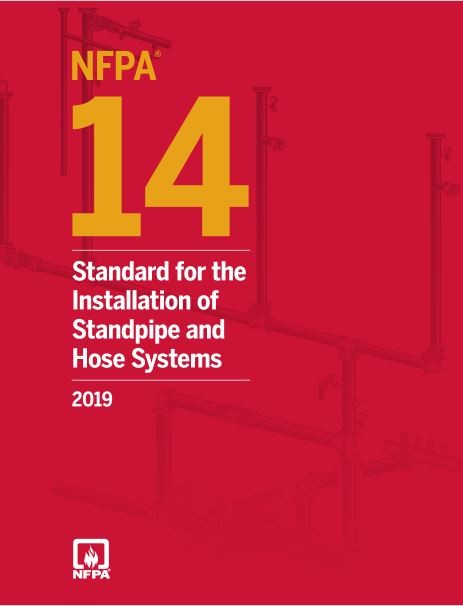
Fires are an emergency. Considering that, we are taught starting our childhood about fire prevention and protection. But when fire kindles at most unexpected times, people can not cope with the emergency due to ineffective and improperly installed fire safety equipment.
To ensure people's safety in case of a fire emergency, NFPA provided various codes and standards, each dealing with different fire safety equipment to minimize the fire damage in America.
In this regard, NFPA 14: Standard for the Installation of Standpipe and Hose Systems provides all instructions regarding the installation of standpipes and hose systems to ensure a sufficient degree of protection against the fire.
What is Standpipe and Hose system?
Before diving into the details of the NFPA 14, let's first look at a Standpipe and fire hose systems.
According to NFPA :
Standpipes consist of vertical rigid pipes and valves, attached with hose and nozzles. These pipes are connected to the water supply and installed on floors of multistory buildings to combat the fire. In case of fire, Standpipes discharge water through hose or nozzles, which extinguishes the fire, thus protecting the building and residents.
NFPA 14 provides all necessary requirements about the proper fixation of standpipes and hose systems to offer maximum protection against fire by delivering adequate water amounts.
It covers all instructions about the proper designs, building requirements for installation, as well as proper locations of hose and Standpipe to ensure the optimum activity.
Building requirements for Standpipe and hose system installation
Before the installation of standpipe systems, a fire inspector thoroughly examines the building to see whether the facility meets the NFPA 14 criteria for standpipe system or not. In case a building does not meet any of these criteria, Standpipe will not be required to install in the building.
· According to NFPA 14, a standpipe system is required for:
· A building having one or more story below grade (20 ft below grade)
· A building with occupant load surpassing 1000.
· Mall buildings -Both covered as well as open
· Underground buildings
· Buildings stage expanding to an area of 1000ft2 or greater
· Buildings having helistop and heliports
· Rooftop gardens and landscaped roofs
For installing a standpipe system, the building's height is critical to consider. If a building whose uppermost story floor level is present at the elevation of more than 30 ft from its lowest level or the fire department's lowest level, a Class III standpipe should be installed.
Requirements for the selection of proper Standpipe systems
Apart from considering the building requirements, NFPA 14 also specifies which type of Standpipe needs to be fitted in the building. Standpipe systems are available in three types, I, II, and III. Which one is most appropriate for a specific building depends on whether they are used for full-scale fire fighting, first aid fire fighting, or both.
For example, the class I standpipe system with 2 ½-in. hose connections are designed to be used by the fire department. Class II standpipe system has 11/2-in. Hose connections and intended for trained workers and the fire department. Meanwhile, Class III system with both 1 ½-in. and 2 ½-in. hose connections are also used by trained personnel and the US fire department.
Identification of appropriate location for Standpipe system installation
Once the appropriate type of standpipe system is determined, the next challenge is identifying proper locations for hose outlets in the building. An outlet needs to be fitted at the intermediate landings in all internal exit stairways.
Apart from intermediate landings, each wall contiguous to the external exit and entrance must contain hose outlets under NFPA 14. In the case of malls, an outlet is required at each public entrance point and adjacent to the passageways to ensure people's safety.
Another factor of prime importance regarding the standpipe system's appropriate installation and functionality is the travel distance from an outlet. The hose outlet distance should not exceed 130 ft in non -sprinklered buildings, while in the case of sprinklered buildings, the distance need not be more than 200 ft. So, if a building is constructed considering the codes and recommendations of NFPA, every part of the building is accessible to hose (within 200 ft).
Conclusion
In short, NFPA 14 provides all the necessary instructions for the installation of standpipes and hose systems in multistory buildings to ensure people's protection in case of fire ignition. So before designing a standpipe system for any building, engineers need to know about the requirements directed by NFPA standard.
NFPA 15 Standard for Water Spray Fixed Systems for Fire Protection
Fire safety is of prime importance while designing any building to ensure the protection of occupants as well as the facility. Fire safety equipment is installed in almost every building in America, but it does not mean that fire will never happen.
Fire is an unpredictable catastrophe that can start at any time. So, one needs to be always ready to combat such contingencies. To handle the fire at the most appropriate time, one 'requires adequately installed and functional fire safety equipment such as Water Spray Fixed Systems.
What is Water Spray System?
Water Spray System is a fixed pipe system that is connected with a water source and spray nozzle. The system is associated with the automatic detection system or fire alarm to get activated in case of fire.
Upon activation, it supplies water at a high pressure to control the fire. Water Spray System is employed to protect from fire caused by flammable liquid, gases, oil switches, electrical equipment such as transformers, etc.
NFPA 15: Standard for Fixed Water Spray Systems
All the instructions relevant to the water spray system are provided by NFPA 15. NFPA 15: Standard for Water Spray Fixed Systems for Fire Protection helps control fire by giving guidance about water spray system layout and proper testing and maintenance of the system.
Selection of a nozzle according to NFPA 15
NFPA 15 contains all the instructions for selecting the correct spray nozzle to achieve the proper coverage area and water density requisite to extinguish the fire.
The nozzle selection under NFPA 15 involves considering different factors such as the purpose of the system, discharge characteristics of the nozzle, thermal draft condition, equipment configuration, and atmospheric conditions.
NFPA 15 provides the method to determine the range of water spray by measuring velocity and water droplet size. Velocity is an important factor while selecting a proper nozzle for a fixed water spray system, and no one can change a nozzle without fulfilling the requirements of NFPA 15 standard.
Requirements for proper pipes and hangers selection
Apart from nozzles, the standard covers all necessary recommendations regarding water spray system pipe, fittings, and hangers. According to NFPA 15, Pipe hangers and support should be designed to endure the impact of maximum operating pressure. The standard requires the pipes capable of withstanding at least 175psig water pressure so that they do not collapse in case of emergency.
All the pipes and fittings should be made of anti-corrosive material, and they should be galvanized to ensure maximum protection. If the galvanization is damaged at any point, the exposed steel should be covered with resistant paint.
Actuation valve for fixed water spray system
Under the recommendations of NFPA 15, each water spray system must possess system actuation valves (for opening and closing of the system) to control the flow of water. Actuation valves are required both for manual as well as automatic operation.
In a manual system, these actuation valves should be present on the access points, easy to identify in an emergency. In addition to these valves' locations, NFPA 15 covers all requirements for the types of valves.
System actuation valves that are required for automatic systems are known as deluge valves. NFPA 15 ensures that these valves are properly regulated hydraulically, electrically, or mechanically to spray water when needed.
Instructions for proper inspection and maintenance of fixed water spray system
Apart from proper design and fitting of fixed water spray systems, NFPA 15 makes sure the appropriate maintenance and inspection of the system to avert the fire danger.
It ensures :
· Adequate water supply
· Annual inspection and cleaning of nozzles and strainers
· Proper cleaning and calibration of values and detectors
Conclusion
Fixed water spray systems provide safety and protection against fire, but they can only work effectively when they comply with the requirements of NFPA 15. NFPA 15 covers all instructions and requirements for optimal functioning and maintenance of fixed water spray systems.
.
NFPA 17A Standard for Wet Chemical Extinguishing Systems
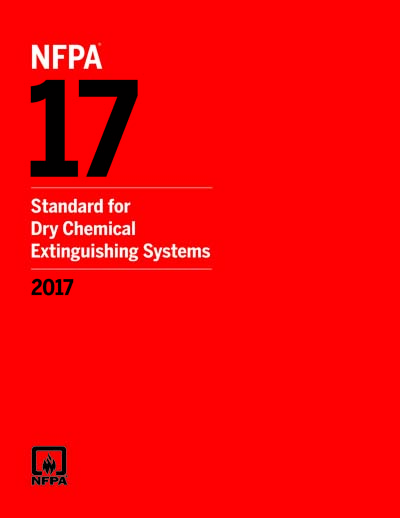
Cooking has become the leading cause of fire-related causalities worldwide. According to NFPA's 2020 report" U.S Home Cooking Fires," almost 49% of home fires in America are caused by unattended cooking. The report highlighted that nearly 173,000 cooking fires occur in homes every year, resulting in 550 deaths and 4,820 civilian injuries.
That is quite appalling!
Considering the escalating Kitchen related fire cases in the country, NFPA provides necessary instructions and recommendations regarding the Wet chemical extinguishing systems to control cooking-related fire accidents.
Wet chemical extinguishing systems
Wet chemical fire extinguishing systems are most commonly used to provide fire protection in commercial cooking operations. These commercial cooking operations include restaurants, plenums, institutional hoods, ducts, filters, and other cooking appliances.
NFPA 17-A Standard for Wet Chemical Extinguishing Systems
NFPA 17A: Standard for Wet Chemical Extinguishing Systems contains necessary information about the design, installation, maintenance, and inspection of wet chemical extinguishing systems. The standard provides all recommendations required for proper selection of :
· Minimum and maximum pipe lengths
· Quantities of agent used
· Specific pipe sizes
· Nozzles size and pressure
· Flow rate
In case of fire, a specific liquid agent is sprayed by extinguishers with a pre-determined flow rate and pattern from the nozzle. Upstream of the nozzle, a Stainer shall be present along with a protective cover cap to prevent the entry of contaminants or foreign particles in pipes.
Requirements for Wet Chemical Extinguishing Systems installation.
According to NFPA 17A, wet chemical extinguishing systems shall be approved by an authorized person. Before the installation, the installing contractor shall ensure that appliances, pipes, hoods, and ducts are correctly positioned and protected according to the standard. The team shall verify that accurate nozzle and pipes are used and fastened in the system to protect against the fire.
Piping integrity test.
After verifying these parts, the next step required, according to NFPA 17 A, is the piping integrity test to ensure the continuous flow of liquid. For this purpose, NFPA 17A includes four main steps :
· Physical examination of pipes to check tightness.
· To check the normal operating pressure of the system using nitrogen or dry air.
· Confirmation that the nitrogen or dry air is discharged out of the nozzle properly
· Verification shall be done by the authority having jurisdiction.
After the verification is completed, all the devices need to be appropriately labeled with specific instructions given by NFPA 17A. If any other fire suppression system is already installed in the building, the AHJ will check the system to ensure its compliance with the wet chemical fire extinguishing system.
NFPA 17A requirements for the selection of proper nozzles
The nozzle should be accurately marked to assist in the selection of the proper nozzle requisite for operation. NFPA 17 A also ensures that the entire structure comprises anti-corrosive, non-combustible material such as steel or brass.
While selecting the proper nozzle for the system, the nozzle coverage area and its purpose are considered. For example, for duct xx-tr nozzle with 2 flow point shall be used while xx-ed nozzle with 4 flow point is required for Plenum.
Appropriate tanks that comply with nozzles
NFPA 17 A covers recommendations about selecting tanks with appropriate capacities based on Flow point in addition to nozzle requirements. Flow point actually refers to nozzle flow capacity, which determines the tank capacity.
Characteristics of Wet Chemical extinguishing systems
Wet Chemical fire extinguishing system shall have the following characteristics according to NFPA 17A.
· Shutoff devices having the ability to shut down all heat and electrical sources automatically.
· Manual activation even in case of the automatic system except for the systems for common exhaust ducts
· Monitoring devices for electrically controlled automated systems to provide an audio or visible signal in case of dysfunction.
· If any other fire suppression system is present in the building, such as a fire alarm system, the two systems need to be connected so that both can respond in an emergency.
Proper testing of Wet Chemical Fire Extinguishing Systems
Apart from the proper design and installation of wet chemical fire extinguishing systems, proper maintenance and testing are also crucial to ensure the protection you need.
According to NFPA17A:
These systems need to be tested once a month to confirm that all parts are correctly located and protected. Make sure that nothing is obstructing the actuators and they have not been tempered. Thoroughly examine the system to check all the tags and certificates are in place.
NFPA 17-A requirements for inspection of Wet Chemical Fire Extinguishing Systems
NFPA 17A requires a comprehensive and detailed inspection of the system twice a year and after every activation according to its instructions. The inspection involves the examination of the system to check whether the hazard has changed the system or not.
It includes assessing all parts, including nozzles, pipes, and other devices, to ensure that there isn't any obstruction and the agent is properly flowing.
Conclusion
The Technical Committee responsible for NFPA 17A formulated 11 minimum requirements with the objective of providing a thorough procedure for approval, testing, and maintenance of systems. All the instructions provided by NFPA 17-A are necessary to follow before and after the installation of Wet Chemical, fire extinguishing systems to ensure fire protection and safety.
NFPA 17 Standard for Dry Chemical Extinguishing Systems

Fire is one of the most devastating humanmade disasters, occurring frequently and engulfing thousands of lives every year. Losing your beloved one and property in front of your eyes is the scariest thought. But, it is not impossible to combat.
Fire can be controlled through adequately installed and functional fire suppression systems. In this regard, Dry Chemical Extinguishing Systems are a great choice, especially when the sprinkler system is not available.
Dry Chemical Extinguishing Systems
These systems are effective against class ABC fire, and for industrial applications, they act as automatic fire suppression systems.
Dry chemical extinguishing systems release a composition of dry chemical powder to extinguish the fire. The most common fire extinguishing powders used in Dry chemical extinguishing systems include:
- sodium bicarbonate
- potassium bicarbonate
- monoammonium phosphate
- and urea complex.
Their only disadvantage is that they throw a lot of powder at the hazard site, which needs to be cleaned up, but that does not matter when compared to these life-saving systems' significance.
NFPA 17: Standard for Dry Chemical Extinguishing Systems
Like the other fire suppression systems, dry extinguishing chemical systems must comply with NFPA standards. In this regard, NFPA 17:Standard for Dry Chemical Extinguishing Systems provides all essential requirements for purchasing, designing, installing, approving, and inspecting these systems.
According to NFPA 17, Dry chemical extinguishing systems are designed to provide maximum protection against the fire in the following cases:
- Combustible liquids and gases
- Combustible solids that melt in the fire
- Electrical hazards such a transformers and circuit breakers
- Combustibles including cloth, paper, and wood
- Kitchen hazards
Selection of appropriate Operating devices
NFPA 17 provides recommendations for operating devices as well. The standard illustrates that all operating devices used for dry chemical extinguishing systems should encounter the hazard. They should be marked with their minimum and maximum temperature limits, and they should at least withstand the temperature range of 0°C to 49°C.
Requirements for Discharge Nozzles
Discharge nozzles made up of corrosion-free material such a brass or stainless steel shall be used for the system. While selecting discharge nozzles, ensure that they are of adequate strength and capable of enduring fire exposure malformation. They should be of noncombustible material with permanent identification marks.
Another vital point that must be kept in mind while selecting discharge nozzles is blow off caps or devices to hinder the entrance of moisture in piping.
NFPA 17 instructions for manual actuators
NFPA 17 specifies that all devices, including the manual actuators, shall be designed to protect in case of fire. For this purpose, all manual actuators of Dry chemical extinguishing systems can have pictographs, but the lettering size should be at least size 6.35 mm in height.
Guidelines for selection of pipes and fittings
All the pipes and fittings required for the system shall be according to the requirements of NFPA 17. According to NFPA 17 requirements, pipe and fittings, all be of noncombustible material, and they shall be capable of withstanding maximum expected pressure in the piping system.
They should be appropriately galvanized and made up of corrosion-resistant stainless steel, brass, or copper material.
Quantity of dry chemicals for dry chemical extinguishing systems
According to NFPA 17, if the area is mostly enclosed with less than 15% openings, a total flooding system can be used. But if the area of unclosable spaces is less than 1%, no extra dry chemical is needed. If the unclosable openings are present between 1-5 %, an extra dry chemical suppressant can be employed.
Other NFPA 17 requirements for Dry Chemical Extinguishing Systems
Other requirements of NFPA 17 include:
Only trained personnel shall design, install, and maintain dry chemical systems. It specifies that only Authorities having jurisdiction shall be competent to approve the fire protection system.
Under the supervision of NFPA 17, all the equipment or materials used in dry extinguishing chemical systems should be appropriately labeled with the identification mark of the authorizing organization.
Automatic detectors used in the system should be listed. They should be capable of detecting heat, flame, smoke, vapors, or other fire-related hazardous conditions.
Proper coiling of hose around the hose reel to ensure easy uncoiling in case of emergency.
Hose nozzle shall be devised in such a way that one person can easily handle it. It should have an incorporated shutoff device to regulate the flow of dry chemicals.
The dry chemical used in this fire suppression system shall not be replaced with another until approved by the testing laboratory and recommended by AHJ. Different types of dry chemicals should not be mixed without authorized personnel's permission, as they may cause bodily harm.
The carbon dioxide used as expellant gas shall not have a vapor pressure of less than 99.5%, and its water content should not exceed 0.01 %.In the case of nitrogen gas as an expellant, it should have a dew point of (-52.2°C) or lower.
Conclusion
Dry chemical extinguishing systems are designed to control the fire immediately. The sooner the fire can be contained, the lower the chances of causalities and property damage. However, these fire suppression systems' designs and installation conditions are not the same for all the buildings. They can work effectively only when they are installed according to the structure and requirements of NFPA 17.

